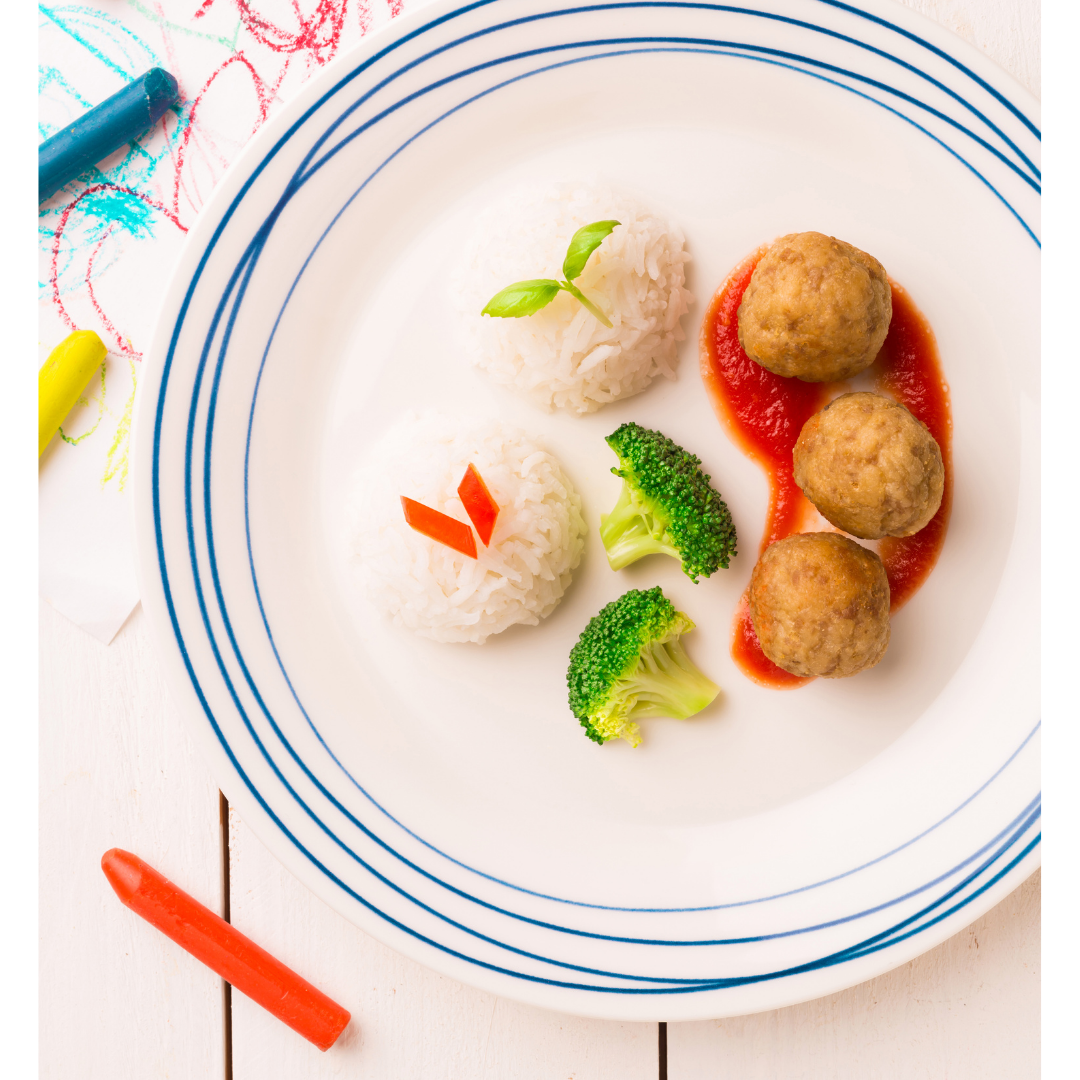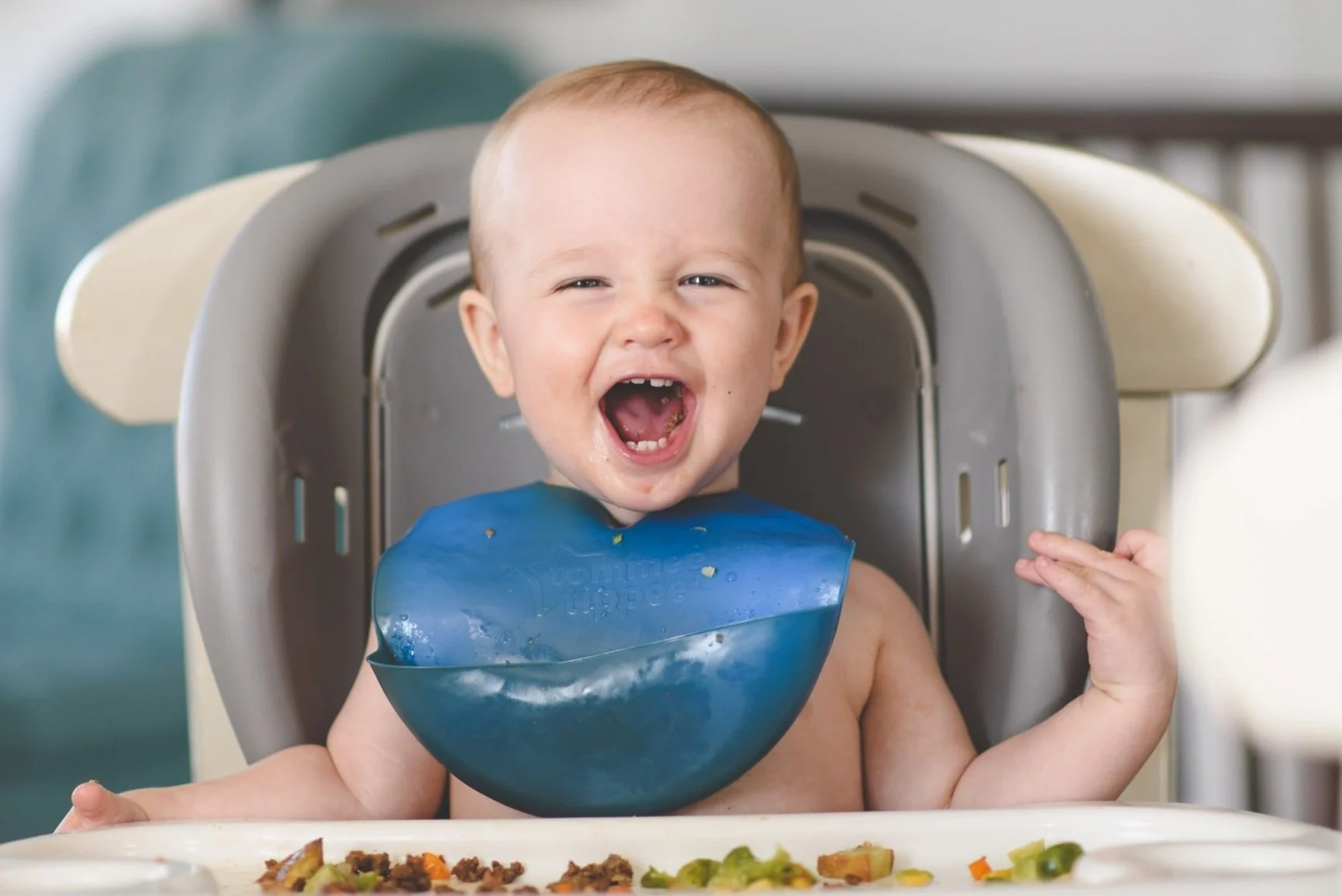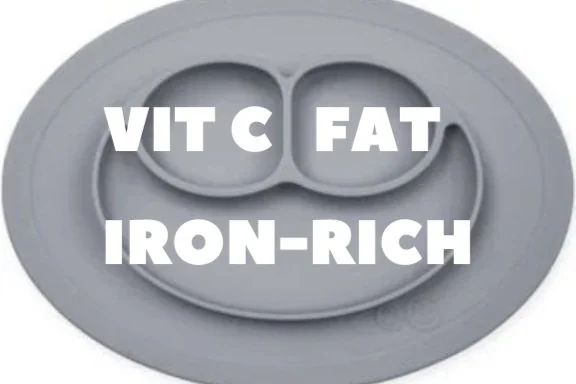Toddlers are unique little individuals with their blossoming personalities, boundary pushing, learning new skills like walking, running, talking, and so much more! With so much going on in their development, it’s not surprising that that once ferocious appetite as an infant is suddenly…gone! This is normal. Frustrating yes, but absolutely normal and typically not a concern to see these changes in your child’s appetite and patience for eating a meal. Understanding the development and uniqueness of a toddler will help to better understand how to approach meal times with them, and what strategies may be helpful to implement.
One of the most common concerns I hear from parents of a toddler is, “they aren’t eating enough”. Is the child still hungry and asking for more food after a meal? Are they falling off their growth chart? If you answered “no” to both, then your child is probably eating enough. As parents though, we may feel they are not getting enough. This could be because we feel they just should eat more, they should feel more hungry because they are just so non stop all day long.
Maybe they ate more as an infant (or has a younger sibling who eats more) and are now eating noticeably less. Maybe they are offered a plate of food, regularly throughout the day, but they never finish it. Maybe they eat really well for snacks, but not for meals. These scenarios are not unique. Keep in mind that one of the reasons infants have such a robust appetite is that they triple their birth weight in the first year, compared to toddlers who will only gain about 5-6 pounds over the course of their second year. Their appetites reflect these changes.
Scheduled Meals and Snacks
Following a schedule or routine for meals and snacks is highly recommended. In fact, if you aren’t following one, start today! Children thrive with routines and meals and snacks are part of their daily routines. Toddlers have small tummies so they need to stop for nourishment every 2-3 hours throughout the day. Aim to offer 3 meals (breakfast, lunch, dinner) and 2-3 snacks (morning snack, afternoon snack, and potentially a bedtime snack).
Toddlers need about 1000-1400 calories per day, but you are not expected to count that! This is simply to provide some context. Divided into 3 meals and 2-3 snacks per day, meals would be roughly 300-350 calories and snacks roughly 100-200 calories. Can you visualize that? I can help with that, too.
Portion Sizes & Serving Sizes
Before we get into the portion and serving sizes, I first need to remind you that these are only a guide. The proper portion or serving size for your child is individualized, varied, and fluctuates over time. Just because you offer them a certain amount of food, it doesn’t mean they will eat it. They may eat none, some, most, or all, and they may even ask for more. Their appetites may really fluctuate day to day, meal to meal or they may more routinely have a few meals or snacks that they tend to eat better than others. What your job is, is to make sure that you offer more if they ask for it, but try not to push or force more if they aren’t interested. Help them listen to their own body and tummy.
Sample Meal
So let’s break down the 300-400 calories per meal and 100-200 calories per snack, and talk about portion sizes. The portion is size is the “guide”. This is how much you could offer your child. The serving size is how much your child chooses to eat. So you may offer 1/2 slice of toast and they may eat 2 bites or they may ask for a second 1/2 slice of toast! Allowing your child to dictate how much they want to eat is important in allowing them to listen to their own bodies (and tummies!).
Breakfast:
1/2 slice toast with 1 Tbsp nut/seed butter + 1/4 cup raspberries + 1/2 cup whole milk
Morning snack:
1 cheese stick + 1/4 cup grapes + 4 crackers
Lunch:
1/2 cup pasta + 2 oz baked fish + 1/4 cup sugar snap peas and carrot sticks + 1/2 cup whole milk
Afternoon snack:
1/2 cup full fat yogurt with hemp hearts and chia seeds + 1/4 cup blueberries
Dinner:
3 turkey meatballs + 1/4 cup rice + 2-3 piece of broccoli + 1/2 cup whole milk
Meals with toddlers isn’t always clear cut. Hopefully with these tips, you’ll find you can navigate your toddler’s appetite and intake a little more easily. For more childhood nutrition tips, follow @NutriKidz on Instagram and for individual nutrition advice, contact us to learn how we can work together.








